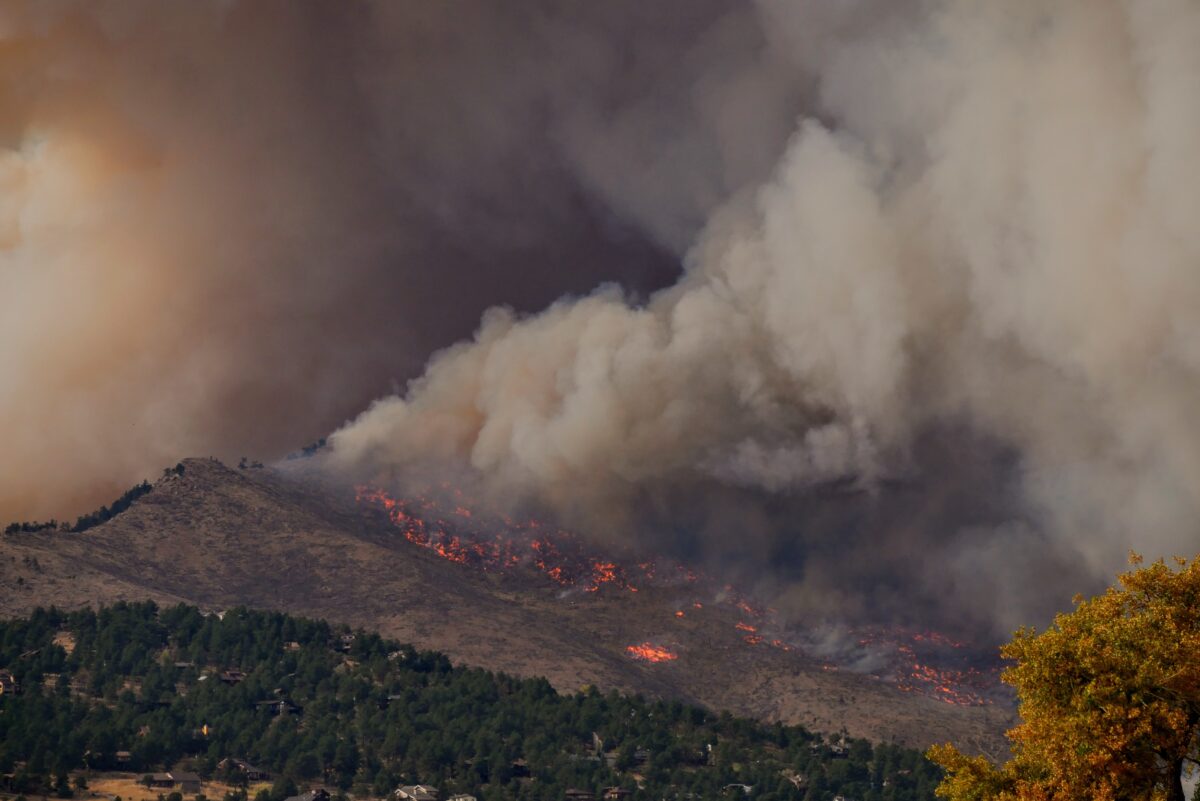States on the West Coast of the United States have been devastated by wildfires throughout summer 2020. More than 30 people have died, and tens of thousands of people have been forced to evacuate their homes. The wildfire in California was recently designated as a gigafire, which is a fire that has burned more than 1 million acres, and it is the largest fire in California’s history. This is usually hard to imagine when living on the East Coast, as the climate is different and there are rarely forest fires of that magnitude. However, in recent weeks, East Coast residents have seen some effects of the West Coast fires. Smoke and ash thousands of miles away has actually traveled over to the Northeast United States, and even further to Europe.
Smoke is able to move like this on the jet stream that covers the United States. Jet streams are bands of strong winds that generally travel from west to east, and they are found all across the planet. There are four main jet streams: two along the north and south poles, and two around the equator. These jet streams form when warm air masses meet cold air masses high in the atmosphere. The warmer air is lighter, and therefore rises up, while the cooler air sinks to replace the warm air. This movement is what generates wind. Jet streams typically move at 110 miles per hour, but when the temperature differences between the cold and warm air masses are very large, the wind can travel at 250 miles per hour. When smoke moves high enough to reach the jet stream, it can be transported across the country and beyond.
This smoke cover, also called vertically integrated smoke, caused hazy skies and a mostly obscured sun in cities such as New York, Washington D.C., and Boston, and temperatures dropped a few degrees as a result. In addition, NASA satellites revealed that there have been carbon monoxide plumes from the fires that have increased the concentration of carbon monoxide in the atmosphere by ten times the normal amount and have traveled across the U.S. Carbon monoxide is an air pollutant that can be life threatening, and it is also a greenhouse gas that contributes to climate change. The most drastic health impacts have been seen on the West Coast, where residents have been experiencing near-surface smoke and it has been completely unsafe to be outside. While the carbon monoxide is at a high enough altitude that it doesn’t impact people on the East Coast, strong winds could bring it down, which would worsen air quality and exacerbate existing health conditions like asthma. This happened in 2017, when smoke from West Coast fires traveled along the jet stream to Iowa, and the smoke then descended around Dubuque and caused unhealthy air quality. While the East Coast was not put in danger during this most recent event, there is always the possibility that smoke from thousands of miles away can settle and impact health.
The United States has seen this kind of wildfire event many times, and the West Coast has been hit the hardest. In August 2018, massive wildfires spread across California, and reports at the time showed that carbon monoxide and smoke had made their way to the East Coast. Scientists also believe that these fires are going to become more frequent and more intense as the climate continues to change. Increasing heat, shortened winters, drought, changes in plant communities, and other effects are contributing to fires. It is estimated that the western fire season has increased by 84 days because of shorter springs, decreased rainfall and snowfall, and longer and hotter summers. It was also found that 97% of ignitions that caused fires and went on to threaten homes were caused by people. Conditions have become so dry and hot on the West Coast that the smallest accidental spark can cause extreme fires that burn for weeks.
These fires are only going to become more common and more intense as climate change progresses. While this issue is currently unique to the West Coast of the United States, these fires could become commonplace across the country as hotter temperatures and decreased rainfall create conditions for wildfires everywhere. Even if there aren’t fires on the East Coast, the smoke from the West Coast can travel thousands of miles, and if fires become worse, the air quality across the country could become worse as well. This problem poses serious risks, and provides a glimpse into what the future for all states—even those who don’t experience wildfires—may hold.
Sources
Borunda, A. The science connecting wildfires to climate change. (2020, September 17). National Geographic. Retrieved from https://www.nationalgeographic.com/science/2020/09/climate-change-increases-risk-fires-western-us/.
Bryan, S. M. Western wildfire smoke causes East Coast haze, vivid sunsets. (2020, September 17). Associated Press. Retrieved from https://apnews.com/article/wildfires-new-york-city-mexico-new-york-europe-f36aead1c4117fb54f2b821bcb29ee8a#:~:text=The%20current%20weather%20system%2C%20which,of%20the%20smoke%2C%20experts%20explained.
Calfas, J. Smoke From California Wildfires Is Reaching the East Coast. Here’s What That Means for the Air Near You. (2018, August 10). TIME. Retrieved from https://time.com/5364151/california-wildfire-smoke-east-coast/.
Death toll rises in US as wildfires continue in West Coast states. (2020, September 13). BBC. Retrieved from https://www.bbc.com/news/world-us-canada-54130785.
Kaur, H. California fire is now a ‘gigafire,’ a rare designation for a blaze that burns at least a million acres. (2020, October 6). CNN. Retrieved from https://www.cnn.com/2020/10/06/us/gigafire-california-august-complex-trnd/index.html.
Money, L., & Read, R. Smoke from California wildfires reaches the East Coast and Europe. (2020, September 15). Los Angeles Times. Retrieved from https://www.latimes.com/california/story/2020-09-15/smoke-california-wildfires-reaches-east-coast-europe.
What is the Jet Stream? (2020, September 30). NOAA SciJinks. Retrieved from https://scijinks.gov/jet-stream/.
Wildfire smoke crosses U.S. on the jet stream. (2017, September 6). NASA Global Climate Change: vital Signs of the Planet. Retrieved from https://climate.nasa.gov/news/2624/wildfire-smoke-crosses-us-on-the-jet-stream/.

